| |
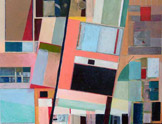
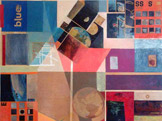

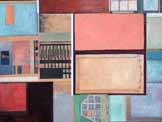
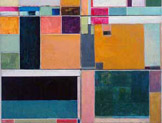
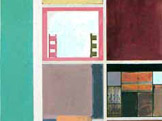
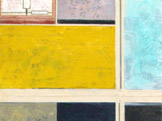

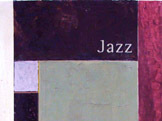
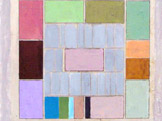
|
2008
Oct. 14th to Nov. 30th - Philadelphia Stories e Outras Storias | Geraldo Souza Dias
Exhibition at the Museum of Art Comtemporânea - MAC USP
More than being mere support, newspapers, cardboards and printed material used by Geraldo Souza Dias originate his paintings. Produced out of worldly elements such as lay-outs of leaflets, his paintings get closer to constructive compositions, resorting to mass culture stereotypes when advertising is the starting point. In some works printed and ready to use images from ads, which function as clichés, come to the foreground, remaining in the work even after some layers of paint. In spite of that, we can not talk of a simple collage which, according to the lessons of pop art juxtaposes elements from the low culture, advertisement and graphic design with the high culture, Painting associated with a noble and grand tradition. As in assemblages, in his works elements of everyday life may arouse, like clothes hanging in a cord, or even other canvases sometimes with the stretcher, attached to the picture plane. The freedom in the use of materials not identified with the tradition of Painting is similar to how colors appear. With no constraints that submit them to a coercive force, colors show up as the central element of the composition with no equivalent in the field of language. Instead of translating meanings already established, the color is the meeting of the perception with the world. Recurrent in the artist’s production, the word behave as the images: second-hand element from printed material which are isolated from its original context and integrated onto the painting. The play between appearing and disappearing is constant. Only by means of the subtraction and the isolation of some letters out of the printed texts, words are created and recreated in several languages. According to the established articulations in the paintings, words change their meanings, but always maintain their very own ambiguity. The spatiality of these paintings is evident by their construction, but with no obligation of following a rigid project prior to the paintings themselves. Even in the horizontal and vertical formats, as in the diagonal structures that seem to arouse from sort of paper folds, the space is all fragmented and reveals an intimate relationship with art making. In the accelerated everyday life in the big cities it is difficult for the painter not to set up a discontinuous and fragmented relationship with his work. It is interesting to notice that also in the photographs from Philadelphia, the juxtaposition and superimposition of spaces and color areas are brought back again, mainly in some reflections of mirrored sky-scrapers. Billboards on the façades of the buildings bring us words that look like as if they came out of Geraldo Souza Dias’s paintings and not from the city. When the experiencing of everyday life is impregnated in the work and vice-versa, it does not matter anymore what comes first: Painting is born from a pre-existing structure not because it reproduces it, but because it reveals us what we can, through the painting, perceive in the world.
Text by Cauê Alves, october 2008. |